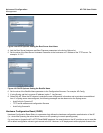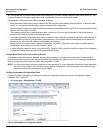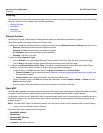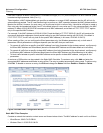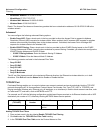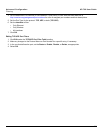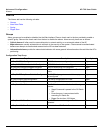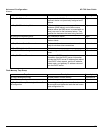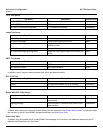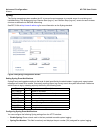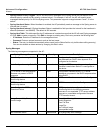
Advanced Configuration AP-700 User Guide
Alarms
75
Alarms
The Alarms tab has the following sub-tabs:
• Groups
• Alarm Host Table
• Syslog
• Rogue Scan
Groups
Alarm groups can be enabled or disabled via the Web interface. Place a check mark in the box provided to enable a
specific group. Remove the check mark from the box to disable the alarms. Alarm severity levels are as follows:
• Critical alarms will often result in severe disruption in network activity or an automatic reboot of the AP.
• Major alarms are usually activated due to a breach in the security of the system. Clients cannot be authenticated
because an attempt at unauthorized access into the AP has been detected.
• Informational alarms provide the network administrator with some general information about the activities the AP is
performing.
Configuration Trap Group
Trap Name Description Severity Level
oriTrapDNSIPNotConfigured DNS IP address not configured Major
oriTrapRADIUSAuthenticationNotConfigured RADIUS Authentication not configured Major
oriTrapRADIUSAccountingNotConfigured RADIUS Accounting not configured Major
oriTrapDuplicateIPAddressEncountered Another network device with the same IP address
exists
Major
oriTrapDHCPRelayServerTableNotConfigured The DHCP relay agent server table is empty or
not configured
Major
oriTrapVLANIDInvalidConfiguration A VLAN ID configuration is invalid Major
oriTrapAutoConfigFailure Auto configuration failed Minor
oriTrapBatchExecFailure The CLI Batch execution fails for the following
reasons:
• Illegal Command is parsed in the CLI Batch
file
• Execution error is encountered while
executing CLI Batch file
• Bigger file size than 100 Kbytes
Minor
oriTrapBatchFileExecStart The CLI Batch execution begins after file is
uploaded
Minor
oriTrapBatchFileExecEnd The execution of CLI Batch file ends. Minor



